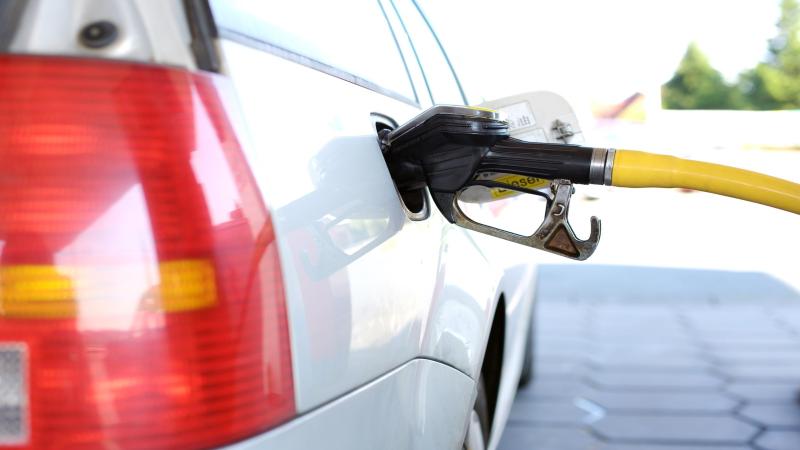
Image by andreas160578 via Pixabay
Hydrogen gas is an environment-friendly fuel, as it produces water upon combustion in the presence of oxygen. For the same weight, hydrogen can provide nearly three times higher energy than gasoline. However, the quantity of hydrogen available from the Earth’s atmosphere is tiny. The more widely available compound, water, might be a source of producing hydrogen. However, the chemical reaction requiring the production of hydrogen from water requires an external source of energy. The aim of making hydrogen an alternative source of fuel requires minimising the energy input in producing it while maximising the amount of energy extracted from combusting hydrogen.
In a recent study, researchers from the Indian Institute of Technology Bombay (IIT Bombay) have used a new catalyst for extracting hydrogen from water. They showed that their chosen catalyst had increased the speed of producing hydrogen and reduced the energy required to do so, compared to previous studies. The study was supported by the Science and Engineering Research Board, Department of Science and Technology, Government of India; the Council of Scientific and Industrial Research, Government of India; and the Industrial Research and Consultancy Center, IIT Bombay. It was published in the journal ACS Sustainable Chemistry & Engineering.
To extract hydrogen from water, researchers insert two electrodes across water and pass current, which can separate the hydrogen from water, a process called electrolysis of water. Earlier studies have shown that metals like Platinum, Rhodium, and Iridium speed up electrolysis.
“Although these metals work well, industrial systems don’t prefer them because they are expensive,” says Prof Chandramouli Subramaniam of IIT Bombay and an author of the study.
The study has used a compound consisting of cobalt and oxygen to achieve the same goal at a much lower cost. While earlier researchers have focussed on developing new catalysts for the electrolysis of water, the authors of the present study concentrated on an alternative approach.
To achieve the increased energy efficiency, the researchers turned to less costly metals, called transition metals, which have more ‘valency’ –– the ability to exchange electrons with other compounds. Copper, iron, nickel lined their choices, but they went with cobalt, which scientists have earlier studied to find that it speeds up electrolysis. They decorated carbon nanoflorets, nanocarbon structures arranged like a marigold flower, with cobalt oxide particles and placed these nanoflorets in the water. An electric field applied though the cobalt oxide to water molecules results in the electrolysis of water. Although cobalt oxide is a well-known electrochemical catalyst, it requires a high amount of energy and produces hydrogen at a low speed.
To increase the speed of electrolysis, the researchers did not rely on the electric field alone. Magnetic fields, which are related to electric fields, can play a crucial role in these reactions. The researchers showed that if they introduced a small fridge magnet near their setup, the reaction speed increased about three times. The researchers measured the amount of energy spent via the electric and magnetic fields and compared it with the cases when there was no magnet in the vicinity of the setup. They found that the electrolysis consumed 19% less energy in a stipulated time.
In their study, the researchers showed that the cobalt oxide was affected by the magnetic fields. Even after the researchers removed the external magnet, the reaction still took place about three times faster than in the absence of the magnetic field.
“This is because the catalyst we have designed can sustain the magnetisation for prolonged periods, the key being the development of a synergistic carbon-metal oxide interface,” explains Jayeeta Saha, an author of the study. “A one-time exposure of the magnetic field is enough to achieve the high speed of hydrogen production for over 45 minutes,” she adds.
The observation has a clear advantage –– there is no need to modify the setup so that it needs to carry with it an external magnet. It is easy to integrate accessible house-magnets into the existing designs at a low cost.
“We can directly adopt the modified setup in existing electrolysers without any change in design or mode of operation of the electrolysers,” says Ranadeb Ball, another author of the study. “The intermittent use of an external magnetic field provides a new direction for achieving energy-efficient hydrogen generation. Other catalysts can also be explored for this purpose,” says Prof. Subramaniam.
The laboratory study by the team is a demonstration for producing hydrogen in the laboratory more quickly and at a lower energy expenditure than earlier experiments. Having shown that the method is not very complicated either, the team is now looking forward to industrial partners implementing their findings. Once the hydrogen is produced in large amounts, it can be packed off in cylinders and used as a fuel. If their efforts are successful, we might be looking at an environmentally friendly fuel, hydrogen, replacing petroleum, diesel, and compressed natural gas (CNG) in the future.
This article has been run past the researchers, whose work is covered, to ensure accuracy.






